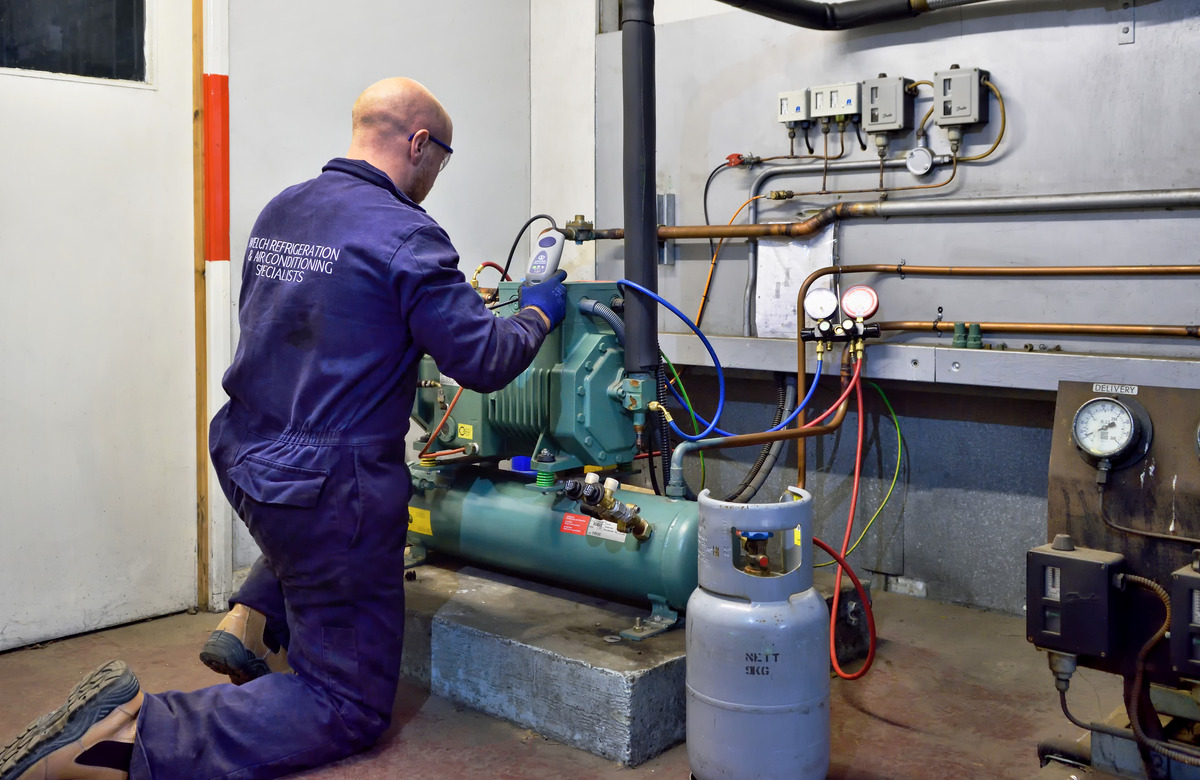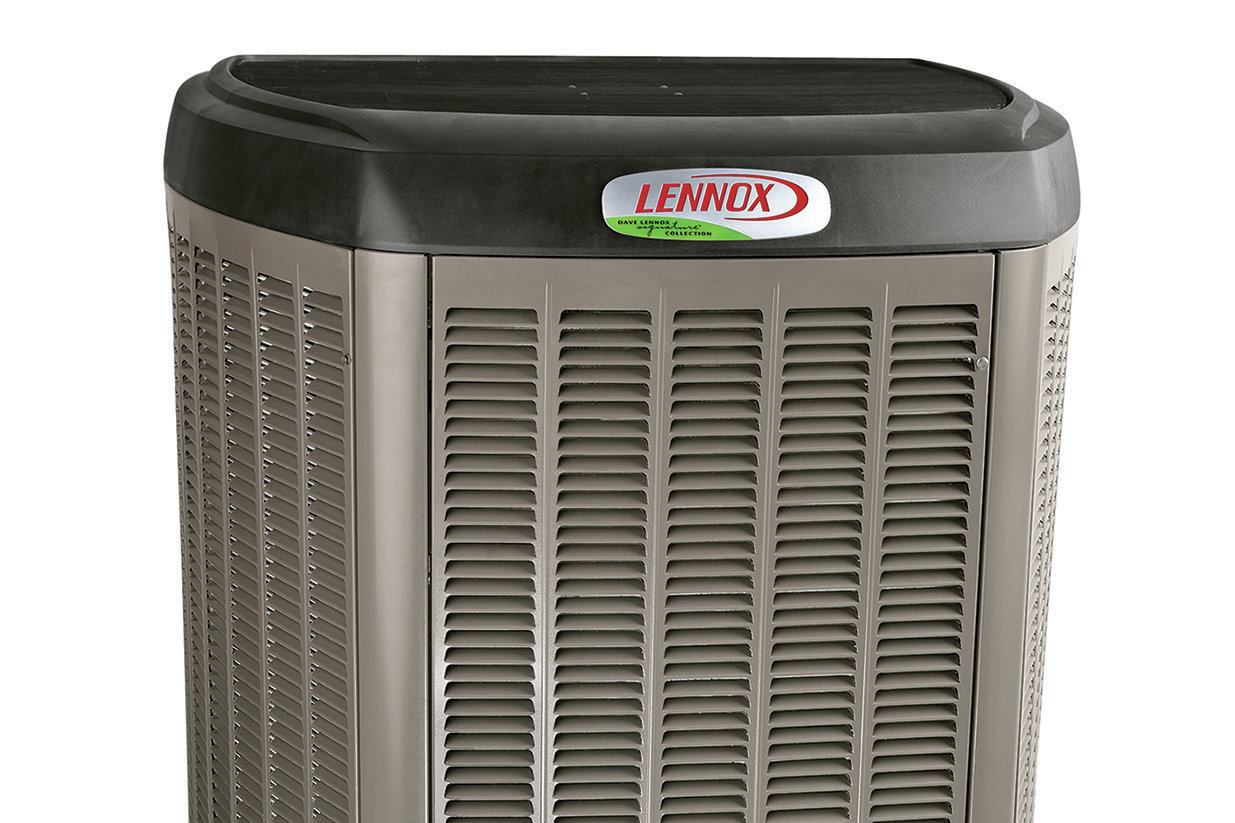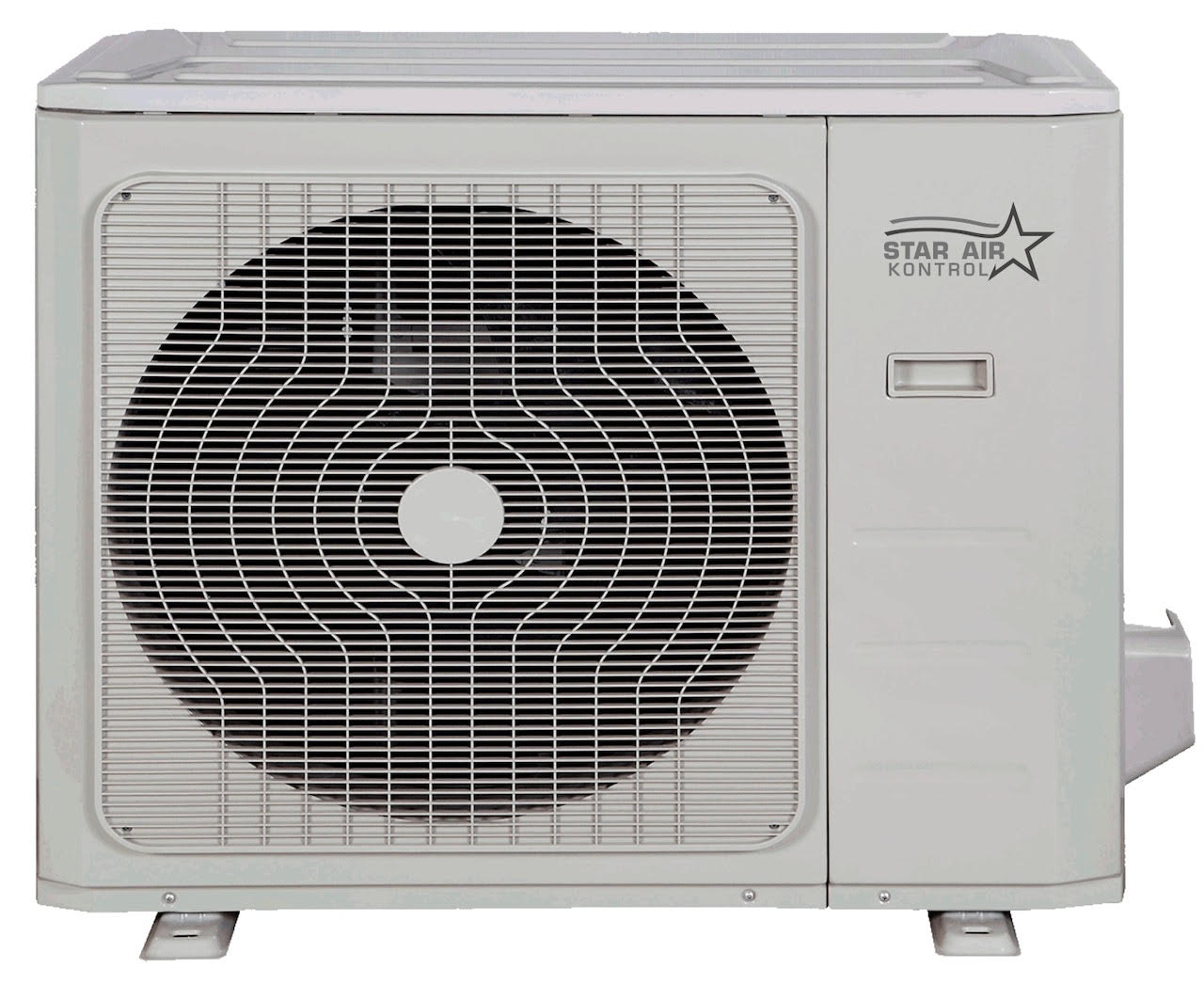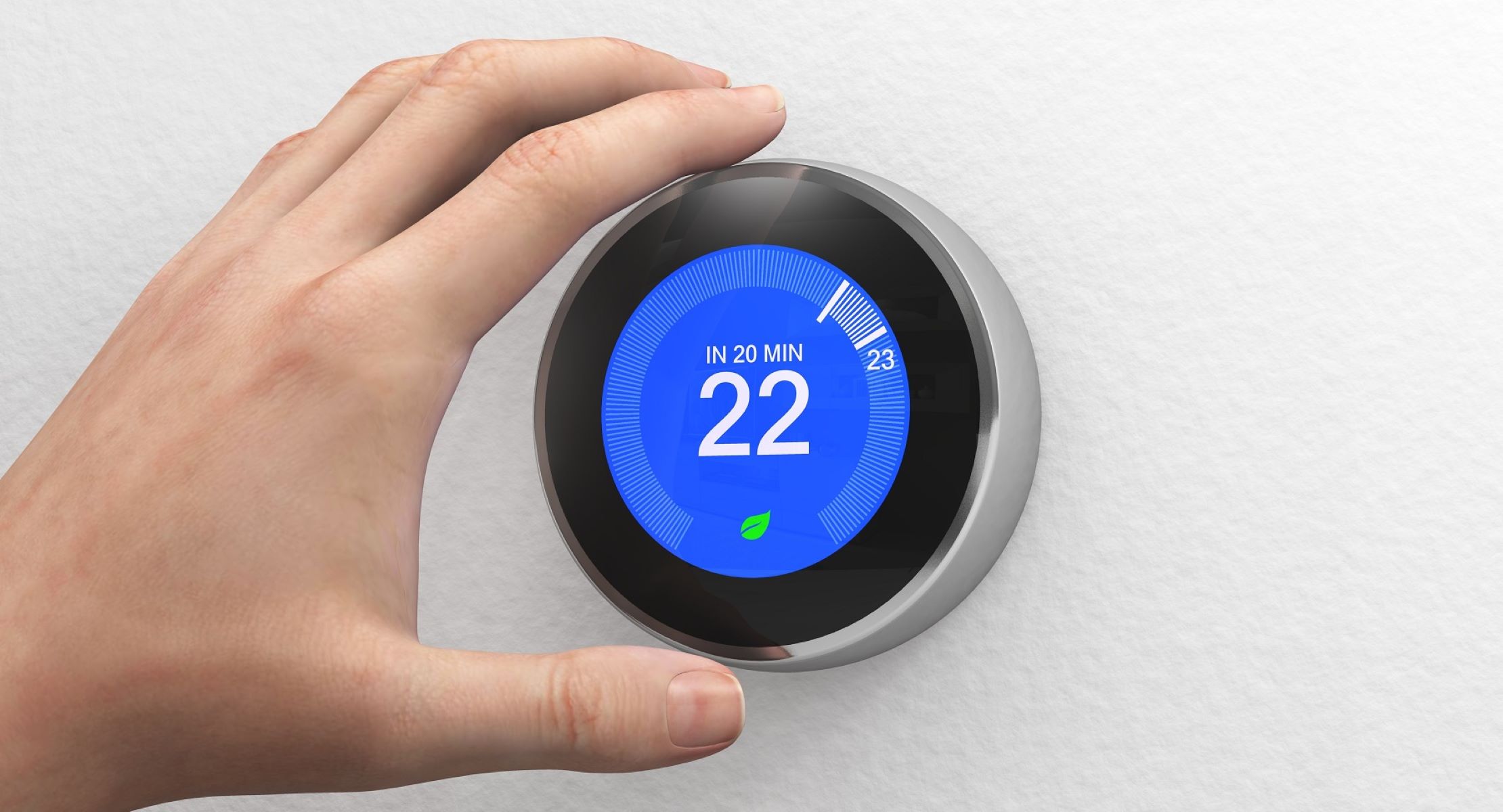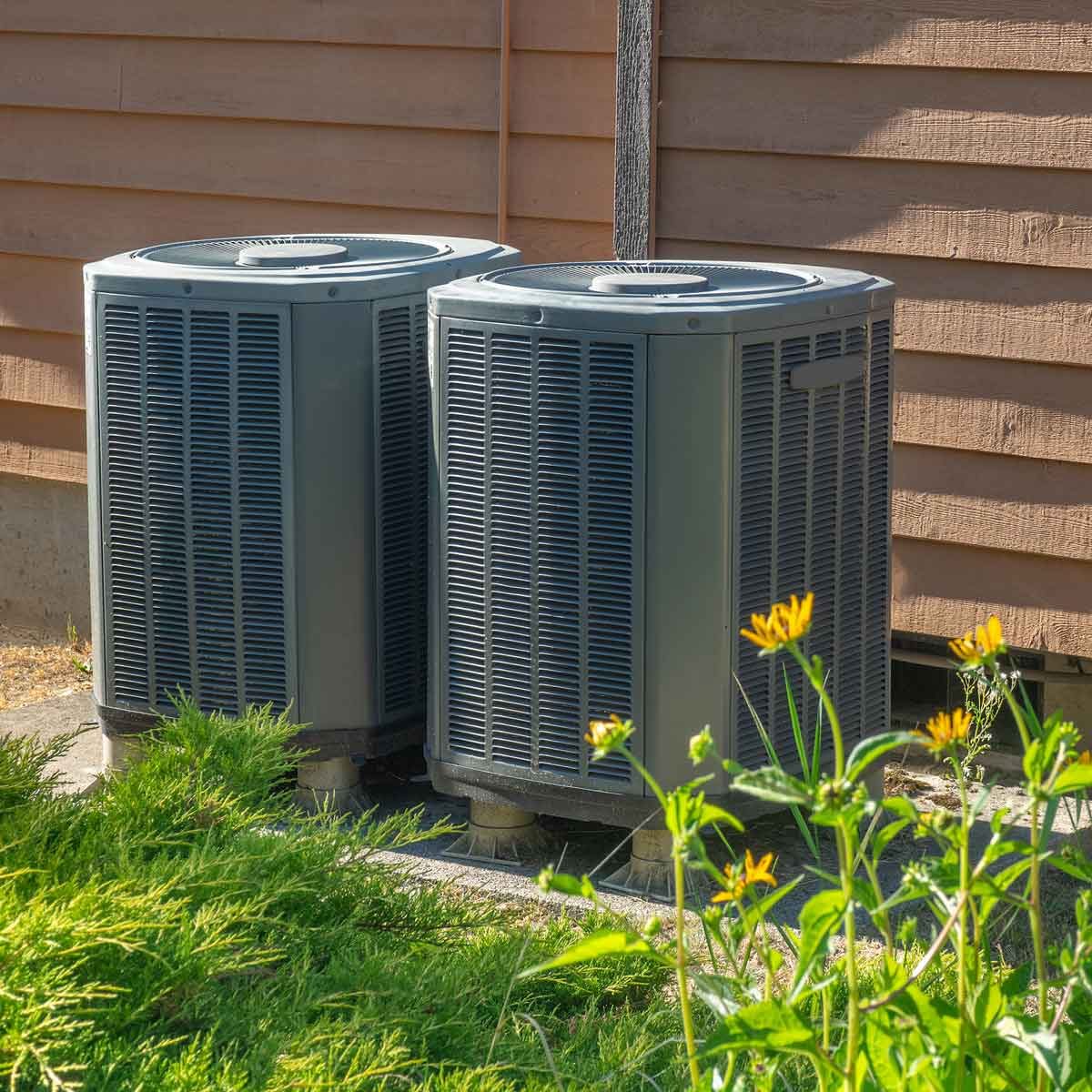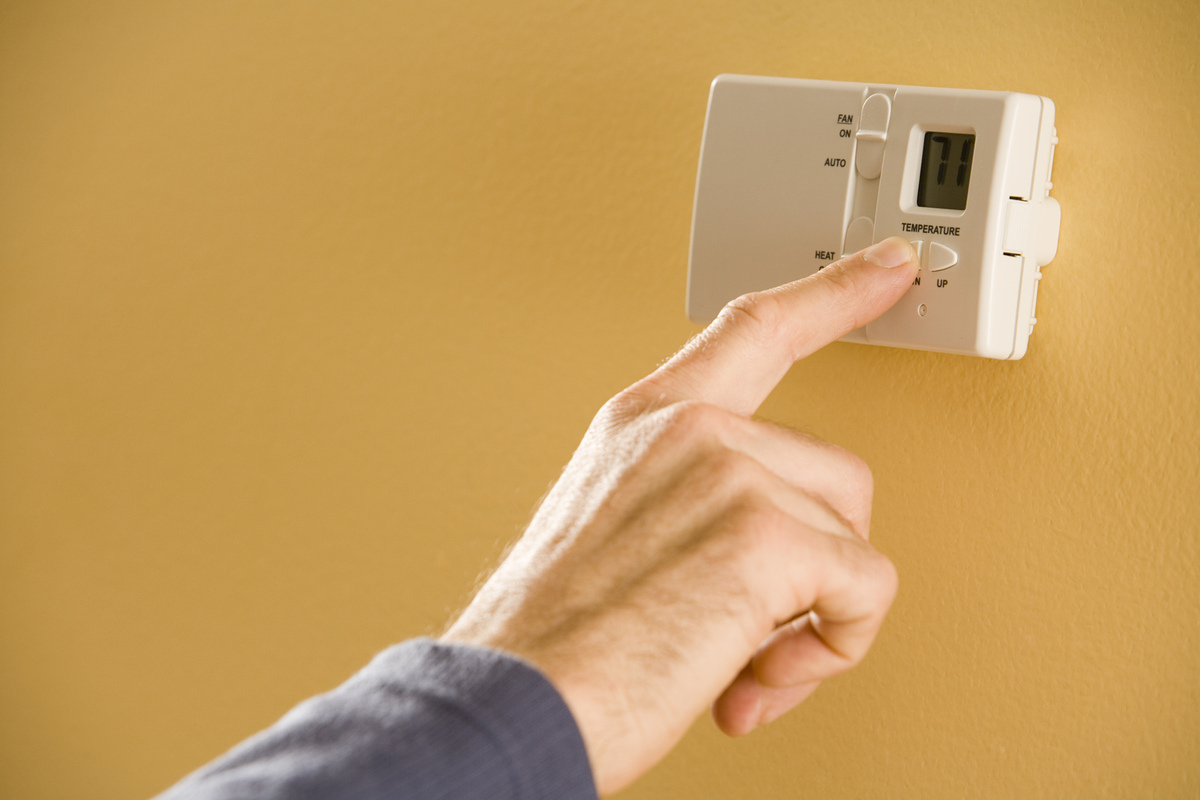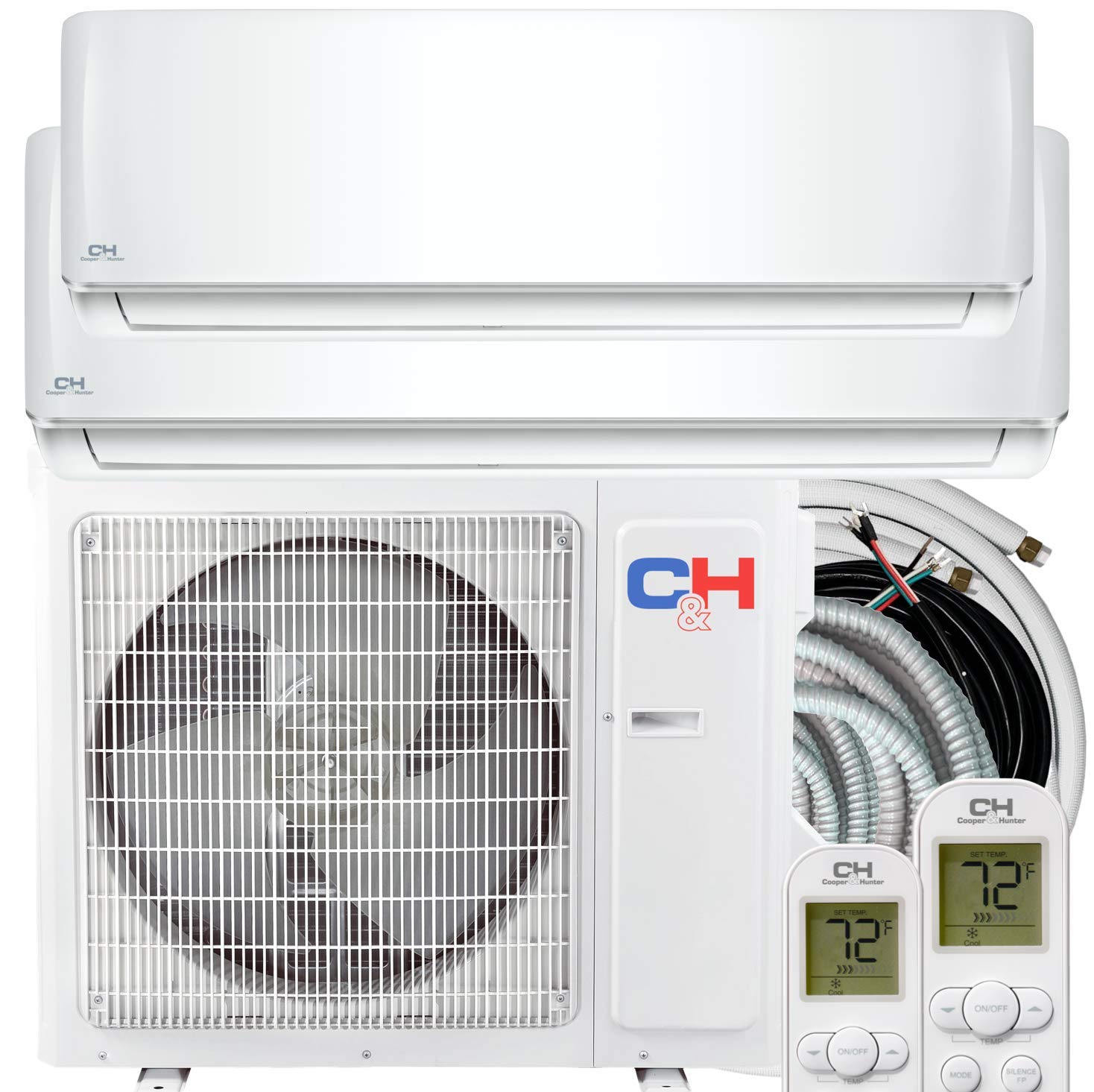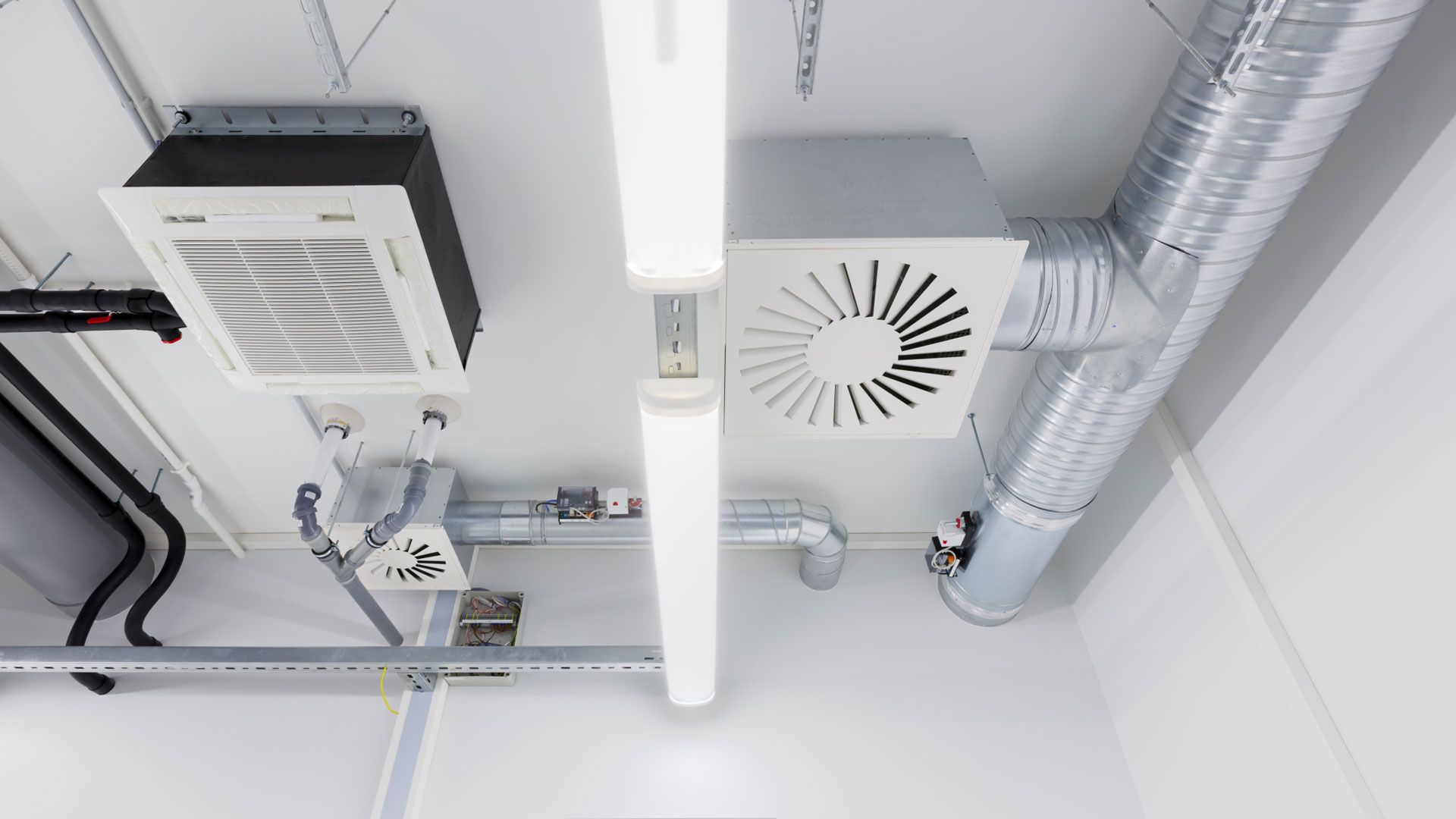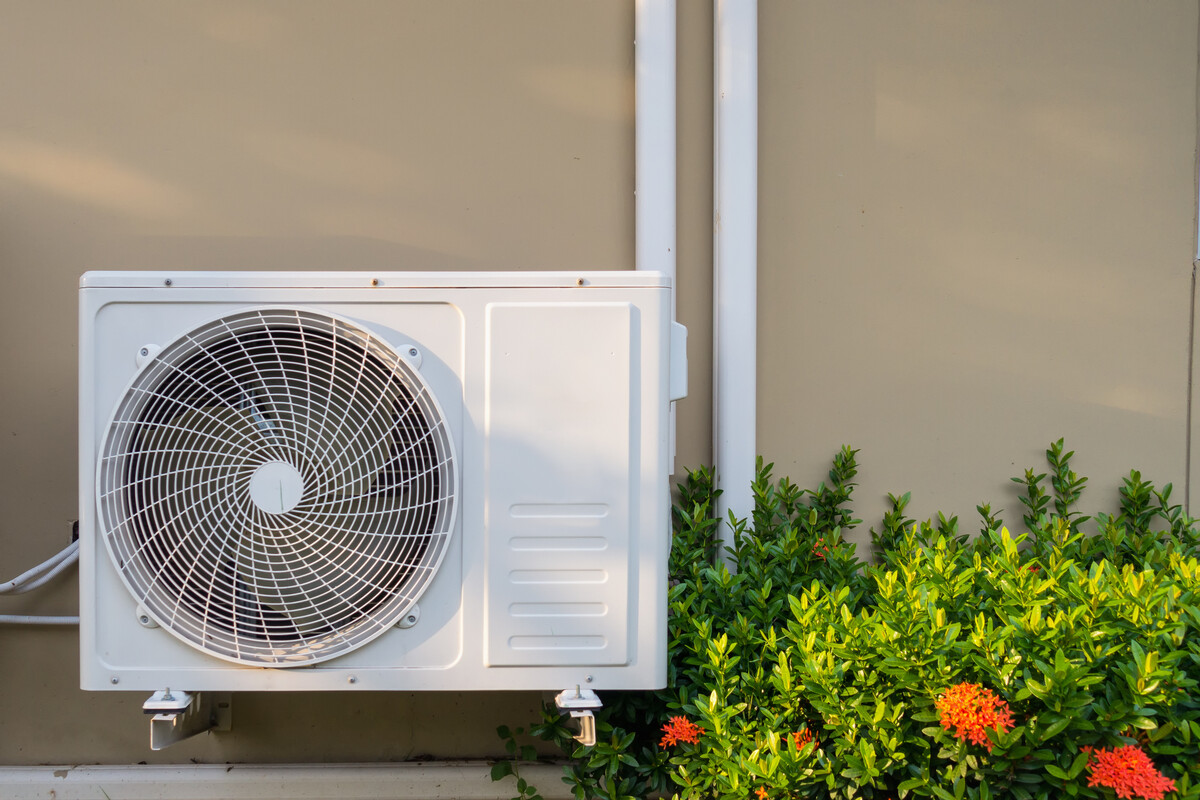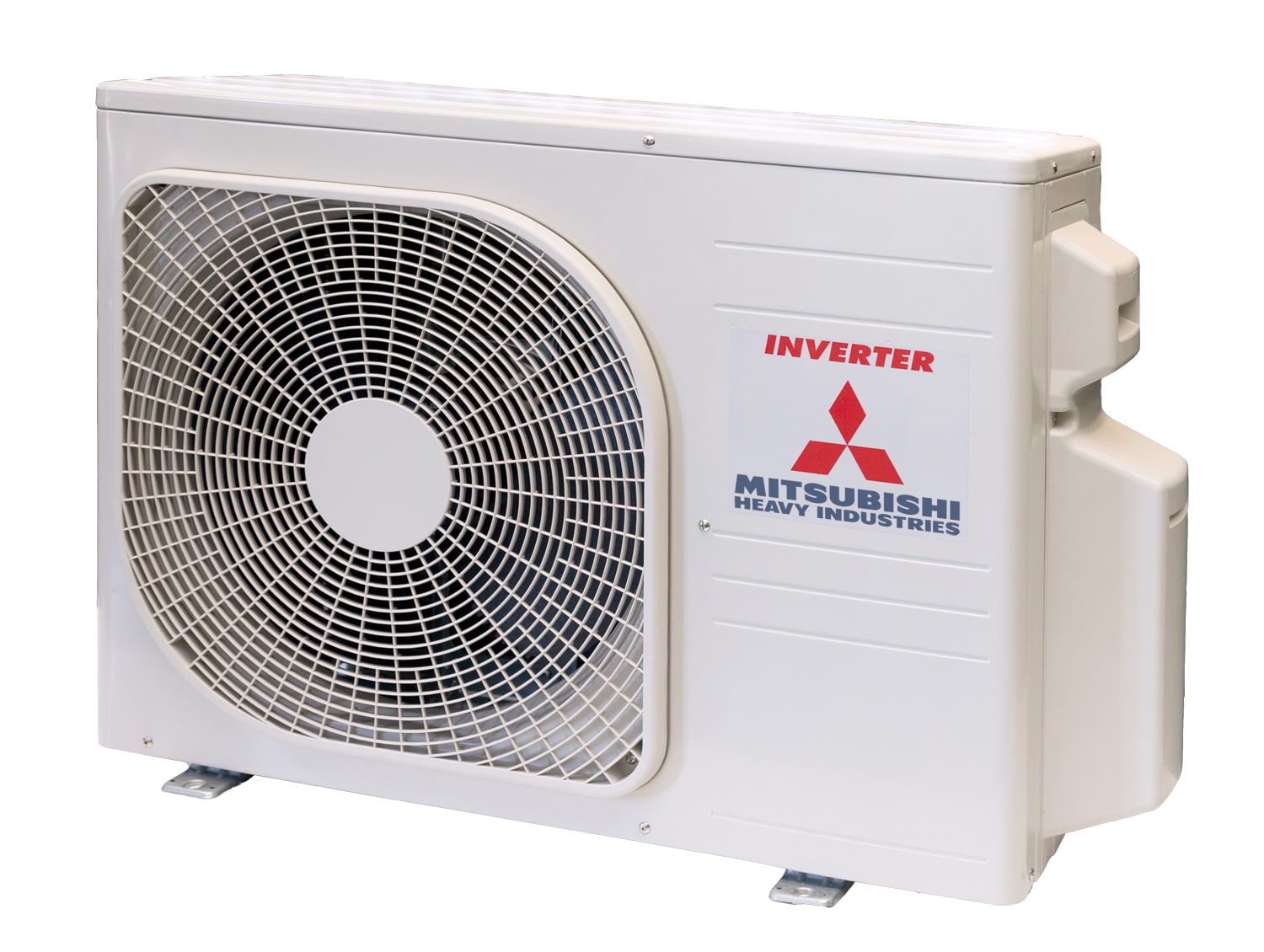Home>Home Maintenance>What Is Climate Control Air Conditioning
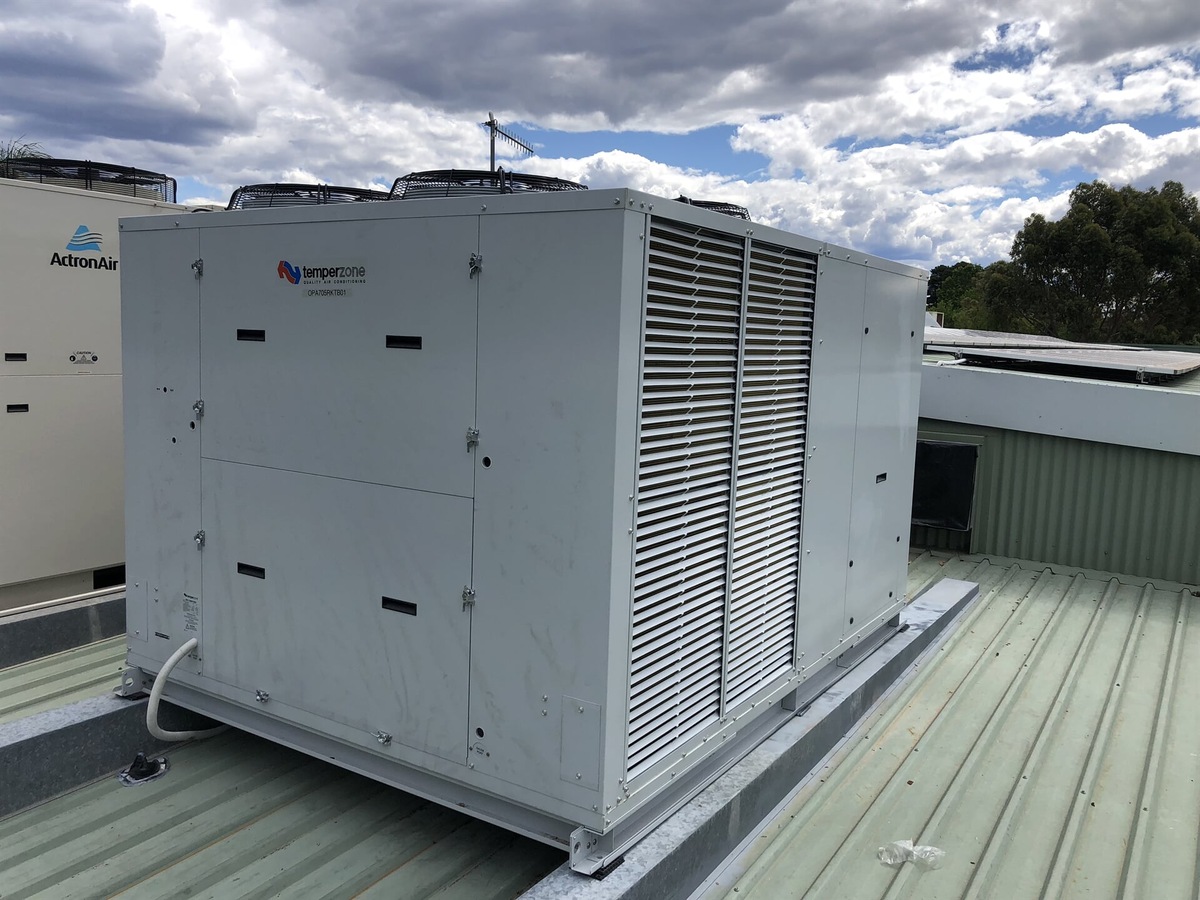

Home Maintenance
What Is Climate Control Air Conditioning
Modified: August 27, 2024
Discover how climate control air conditioning can enhance your home maintenance with improved comfort and energy efficiency. Find out more about this advanced cooling technology.
(Many of the links in this article redirect to a specific reviewed product. Your purchase of these products through affiliate links helps to generate commission for Storables.com, at no extra cost. Learn more)
Introduction
In the scorching heat of summer or the bone-chilling cold of winter, having a comfortable and consistent indoor temperature is essential. That’s where climate control air conditioning comes into play. Climate control air conditioning systems provide the ability to regulate and maintain the ideal temperature and humidity levels in your home or office, ensuring optimal comfort and a pleasant environment year-round.
Whether you are upgrading your existing air conditioning system or considering a new installation, understanding the concept of climate control air conditioning is crucial. This article aims to shed light on what climate control air conditioning entails, how it works, its benefits, energy efficiency, common features, factors to consider when choosing a system, maintenance and care, and the cost associated with installation.
With climate control air conditioning, you have the power to customize your indoor environment to suit your specific needs. Gone are the days of manually adjusting thermostats or relying on basic air conditioning systems that only provide limited temperature control. Climate control air conditioning brings precision and automation to the forefront, ensuring optimal comfort and energy efficiency while allowing you to personalize your indoor climate.
By embracing climate control air conditioning, you can bid farewell to uncomfortable fluctuations in temperature and humidity. With sophisticated sensors and advanced automation, these systems continuously monitor and adjust the indoor environment to maintain a consistent and ideal level of comfort. Whether you prefer a crisp coolness during the dog days of summer or a cozy warmth during the winter months, climate control air conditioning offers precise temperature control to enhance your well-being and productivity.
Furthermore, climate control air conditioning systems are designed to go beyond temperature regulation. They excel in moisture control, reducing excessive humidity in humid climates and providing much-needed moisture in dry environments. By maintaining optimal humidity levels, these systems help prevent mold growth, protect your belongings, and contribute to better indoor air quality.
Now that we have set the stage for understanding climate control air conditioning, we will delve into the essence of these systems – how they work, the benefits they bring, energy efficiency considerations, common features, factors to consider when selecting a system, maintenance and care guidelines, and the cost associated with installation.
Key Takeaways:
- Climate control air conditioning systems offer personalized temperature and humidity settings, ensuring year-round comfort and improved air quality. They provide a tailored indoor environment for a healthier and more sustainable lifestyle.
- Proper maintenance and care are essential for the performance and longevity of climate control air conditioning systems. Regular cleaning, professional maintenance, and thoughtful consideration of installation costs are crucial for optimal operation.
Definition of Climate Control Air Conditioning
Climate control air conditioning refers to a specialized system that offers precise temperature and humidity control within a confined space, such as a home, office, or commercial building. Unlike conventional air conditioning systems that simply cool or heat the air, climate control air conditioning takes a comprehensive approach to create a comfortable and customized indoor environment.
With climate control air conditioning, users can set their desired temperature and humidity levels, and the system will automatically adjust to maintain the chosen settings. This level of control ensures that occupants can enjoy consistent thermal comfort throughout the year, regardless of external weather conditions.
What sets climate control air conditioning apart is its ability to combine cooling, heating, dehumidification, and air purification into a single system. This integrated approach ensures not only temperature regulation but also optimal indoor air quality. By filtering out pollutants, allergens, and airborne particles, climate control air conditioning systems contribute to a healthier and cleaner living or working environment.
To achieve precise temperature and humidity control, climate control air conditioning systems rely on advanced sensors and intelligent automation. These systems continuously monitor the indoor conditions and make real-time adjustments to maintain the desired settings. By dynamically adapting to changing conditions, climate control air conditioning systems ensure comfort while optimizing energy efficiency.
Climate control air conditioning is commonly used in residential, commercial, and industrial settings. It offers numerous benefits, including improved comfort, enhanced air quality, energy savings, and reduced environmental impact. Whether it’s creating an oasis of coolness in the hottest months or a cozy warmth during chilly winters, climate control air conditioning provides the flexibility and control needed to meet individual preferences and requirements.
In summary, climate control air conditioning provides a comprehensive solution for temperature and humidity control. By combining cooling, heating, dehumidification, and air purification, these systems offer precise control over the indoor environment, ensuring optimal comfort, air quality, and energy efficiency. Whether it’s a residential or commercial space, climate control air conditioning brings a new level of comfort and customization to indoor environments.
How Climate Control Air Conditioning Works
At its core, climate control air conditioning systems operate on the principle of thermodynamics and utilize a combination of components and processes to regulate the temperature and humidity within a space. Understanding how climate control air conditioning works can provide valuable insights into the functioning of these systems.
1. Sensors and Control Panel: Climate control air conditioning systems are equipped with sensors that monitor various aspects of the indoor environment, such as temperature and humidity levels. These sensors send signals to the control panel, which acts as the brain of the system.
2. Control Algorithms: The control panel of the climate control system uses advanced algorithms to analyze the data received from the sensors. Based on pre-set user preferences, these algorithms make calculations and determine the necessary adjustments to reach and maintain the desired temperature and humidity levels.
3. Cooling and Heating Components: Climate control air conditioning systems have both cooling and heating capabilities. In cooling mode, the system uses a refrigeration cycle to remove heat from the indoor air. It accomplishes this by circulating a refrigerant, which absorbs heat from the air and releases it outside. In heating mode, the system reverses the refrigeration cycle, extracting heat from the outdoor air (or using an auxiliary heat source) and transferring it indoors.
4. Indoor Air Distribution: Once the air has undergone the cooling or heating process, it is distributed throughout the space via ductwork and vents. The air is directed to different rooms or zones based on the layout and design of the system.
5. Air Filtration: Climate control air conditioning systems often include built-in air filters that capture dust, pollen, allergens, and other particulate matter. These filters improve indoor air quality by removing harmful particles, ensuring a cleaner and healthier environment.
6. Humidity Control: One of the key features of climate control air conditioning is its ability to regulate humidity levels. The system can use various techniques, such as condensation or evaporation, to add or remove moisture from the air, depending on the desired humidity setting.
7. Smart Automation: Climate control air conditioning systems are designed to be smart and intuitive. They can learn and adapt to user preferences over time. Some systems have additional features, such as occupancy sensors, which detect human presence in different areas and adjust the temperature and airflow accordingly.
By combining these components and processes, climate control air conditioning systems can achieve precise temperature and humidity control, creating a comfortable and customized indoor environment. These systems not only provide comfort but also optimize energy efficiency by dynamically adjusting settings to reduce energy consumption. Overall, climate control air conditioning offers a sophisticated solution for maintaining a comfortable and healthy indoor climate throughout the year.
Benefits of Climate Control Air Conditioning
Climate control air conditioning brings a wide range of benefits, enhancing comfort, energy efficiency, and overall well-being. Whether it’s a residential or commercial setting, investing in a climate control system offers numerous advantages. Let’s explore some of the key benefits:
1. Comfortable Indoor Environment: One of the primary benefits of climate control air conditioning is the ability to create a consistently comfortable indoor environment. With precise temperature control, you can set your preferred level of cooling or heating, ensuring a pleasant experience throughout the year. No more suffering through sweltering summer heat or shivering in the winter cold.
2. Personalized Settings: Climate control air conditioning allows you to personalize your settings based on individual preferences. Whether you prefer a cooler temperature for sleeping, a warmer temperature in the morning, or specific humidity levels, these systems offer flexibility to meet your unique needs. With personalized settings, you can enjoy optimal comfort in every room or zone of your space.
3. Energy Efficiency: Climate control air conditioning systems are designed with energy efficiency in mind. They utilize advanced technologies, such as smart thermostats, sensors, and intelligent automation, to optimize energy usage. These systems can automatically adjust settings based on occupancy, outdoor weather conditions, and time of day, ensuring efficient operation and reducing energy waste.
4. Improved Air Quality: Many climate control air conditioning systems have built-in air filtration systems that help improve indoor air quality. These filters capture dust, pollen, allergens, and other pollutants, preventing them from circulating in the air. Cleaner air contributes to a healthier living or working environment, especially for individuals with respiratory conditions or allergies.
5. Humidity Control: Excessive humidity or dryness can be uncomfortable and can also have negative effects on health. Climate control air conditioning systems offer precise humidity control, helping to maintain optimal moisture levels in the air. This eliminates the risk of mold growth, protects wooden furniture and finishes, and keeps the air comfortable and healthy.
6. Noise Reduction: Climate control air conditioning often operates quietly, thanks to advanced technologies and sound-dampening materials. This is especially beneficial in areas where noise can be a distraction or a disturbance, such as bedrooms, offices, or libraries. With minimal noise, you can enjoy a peaceful and tranquil indoor environment.
7. Environmental Sustainability: Energy efficient climate control air conditioning systems contribute to reducing carbon footprint and environmental impact. By optimizing energy usage and incorporating renewable energy sources, these systems help conserve energy and promote a sustainable lifestyle. Additionally, the advanced sensors and automation in these systems prevent unnecessary energy consumption, further minimizing environmental harm.
In summary, climate control air conditioning offers a wide array of benefits, including optimal comfort, personalized settings, energy efficiency, improved air quality, humidity control, noise reduction, and environmental sustainability. By investing in a climate control system, you can enjoy a more comfortable and healthier indoor environment while minimizing energy waste and reducing your ecological footprint.
Energy Efficiency of Climate Control Air Conditioning
In today’s world, energy efficiency is a crucial consideration when choosing any home or office appliance, and climate control air conditioning systems are no exception. These systems are designed to optimize energy consumption, reduce waste, and promote sustainability. Let’s explore the key factors that contribute to the energy efficiency of climate control air conditioning:
1. Intelligent Automation: Climate control air conditioning systems employ intelligent automation to optimize energy usage. Advanced sensors and control algorithms continuously monitor and analyze indoor and outdoor conditions, adjusting settings accordingly. This ensures that the system operates efficiently, only using energy when needed and minimizing energy waste.
2. Programmable Thermostats: Most climate control systems come with programmable thermostats that allow users to set specific temperature and timing preferences. By programming the system to adjust temperatures during periods of low occupancy or when the space is not in use, energy consumption can be minimized without compromising comfort. This feature is particularly useful for commercial settings with fixed operating hours.
3. Zoning Capabilities: Climate control air conditioning systems with zoning capabilities allow different areas or rooms to be independently controlled. This means that you can set different temperatures for each zone, only cooling or heating areas that are occupied. By avoiding unnecessary cooling or heating of unoccupied spaces, energy efficiency is greatly enhanced.
4. Energy-Saving Modes: Many climate control systems offer energy-saving modes that optimize performance while reducing energy consumption. These modes may include features such as adaptive cooling or heating, which automatically adjust the system based on the occupancy and outdoor conditions. Additionally, some systems use motion sensors to detect human presence and adjust settings accordingly, further reducing energy waste.
5. High-Efficiency Components: Climate control air conditioning systems utilize high-efficiency components, such as compressors and fans, to maximize energy savings. These components are designed to operate with minimal energy consumption while still providing optimal performance. Investing in systems with energy-efficient components ensures that you are getting the most out of your air conditioning while minimizing electricity usage.
6. Insulation and Air Leakage Prevention: Proper insulation and sealing of doors, windows, and ductwork play a vital role in energy efficiency. Adequate insulation helps maintain the desired temperature and reduces heat gain or loss, resulting in lower energy consumption. Similarly, preventing air leakage through properly sealed ducts ensures that conditioned air reaches its intended destination, avoiding unnecessary energy waste.
7. Regular Maintenance: Regular maintenance of your climate control system is crucial to ensure optimal energy efficiency. Regularly cleaning or replacing filters, checking refrigerant levels, and inspecting components can significantly improve the system’s performance and reduce energy consumption. It is recommended to schedule professional maintenance at least once a year to keep your system in top condition.
In summary, energy efficiency is a key aspect of climate control air conditioning systems. Features such as intelligent automation, programmable thermostats, zoning capabilities, energy-saving modes, high-efficiency components, proper insulation, and regular maintenance all contribute to reducing energy waste while maintaining optimal comfort. By investing in an energy-efficient climate control system, you can enjoy a comfortable indoor environment while minimizing your environmental impact and reducing energy costs.
Climate control air conditioning refers to a system that not only cools the air, but also controls humidity and maintains a consistent temperature. It’s great for keeping your home or car comfortable in any weather.
Read more: Which Fuse Controls Air Conditioning
Common Features of Climate Control Air Conditioning Systems
Climate control air conditioning systems come with a wide range of features designed to enhance comfort, convenience, and energy efficiency. While specific features may vary depending on the brand and model, there are several common features that you can expect to find in these systems. Let’s explore some of these features:
1. Thermostat Control: Climate control air conditioning systems typically include a thermostat that allows users to set and adjust the desired temperature. Modern systems often feature digital thermostats with user-friendly interfaces for easy control. Some advanced thermostats may even have Wi-Fi connectivity, enabling remote control via smartphone applications.
2. Humidity Control: Many climate control systems offer humidity control features. These features allow you to set and maintain the desired humidity level in your space, providing optimal comfort and preventing issues related to excessive moisture or dryness. This is particularly beneficial in humid climates or during dry seasons.
3. Zoning Capabilities: Zoning allows for different areas or rooms to be independently controlled, providing customized comfort and energy efficiency. Climate control systems with zoning capabilities allow you to set different temperature settings for each zone, avoiding unnecessary cooling or heating of unoccupied areas. This feature is particularly useful in larger spaces or multi-story buildings.
4. Air Filtration: Climate control air conditioning systems often come equipped with built-in air filters that help improve indoor air quality. These filters capture dust, pollen, allergens, and other airborne particles, ensuring cleaner and healthier air. Some systems even have advanced filtration options, such as HEPA filters, for enhanced air purification.
5. Smart Automation: Many climate control systems are equipped with smart automation features that optimize energy usage and enhance convenience. These features can include occupancy sensors that detect human presence and adjust settings accordingly, adaptive cooling or heating that automatically adjusts based on occupancy and outdoor conditions, and learning algorithms that adapt to usage patterns for personalized comfort.
6. Energy-Saving Modes: Energy-saving modes are common in climate control systems, offering predefined settings that prioritize energy efficiency without compromising comfort. These modes may include features like setback or economy mode, which adjust the temperature and airflow to reduce energy consumption. Some systems also offer scheduling options that allow you to automatically adjust settings based on specific time periods or occupancy patterns.
7. Remote Control: Many climate control systems offer remote control capabilities for added convenience. This allows you to adjust settings and monitor your system from anywhere within your home or even remotely via smartphone applications. Remote control features provide flexibility and ease of use in managing your climate control system.
8. Energy Consumption Monitoring: Some advanced climate control systems provide energy consumption monitoring features. These features allow you to track and analyze your system’s energy usage, providing insights into your energy-saving efforts and helping you make informed decisions to further optimize efficiency.
In summary, climate control air conditioning systems come with a variety of common features that enhance comfort, energy efficiency, and convenience. From thermostat control and humidity control to zoning capabilities, air filtration, smart automation, and remote control, these features offer a comprehensive solution for maintaining a comfortable and tailored indoor environment. By understanding these features, you can choose a system that best suits your needs and preferences.
Factors to Consider when Choosing Climate Control Air Conditioning
When selecting a climate control air conditioning system for your home or office, it’s essential to consider several factors to ensure you choose the right system that meets your specific needs and requirements. Here are some key factors to consider:
1. Cooling and Heating Capacity: The first and foremost factor to consider is the cooling and heating capacity of the system. This is determined by the British Thermal Unit (BTU) rating or tonnage of the system. The size of the space you need to cool or heat will dictate the appropriate capacity. It’s recommended to consult with a professional to accurately determine the capacity required for your specific area.
2. Energy Efficiency: Energy efficiency is crucial to minimize operating costs and reduce your environmental footprint. Look for systems with high Energy Efficiency Ratio (EER) or Seasonal Energy Efficiency Ratio (SEER) ratings. Higher ratings indicate better energy efficiency. Energy Star certified systems are also worth considering, as they meet strict energy efficiency guidelines.
3. Zoning Capabilities: If you have a large space or multiple rooms with varied cooling and heating needs, consider systems with zoning capabilities. Zoning allows you to customize temperature settings for different areas or rooms, ensuring optimal comfort and energy efficiency. This feature is particularly beneficial for households or offices with varying occupancy patterns.
4. Noise Levels: Consider the noise levels produced by the climate control system. Noise can be disruptive, especially in areas where quietness is desired, such as bedrooms or offices. Look for systems that have sound-dampening features or operate at low decibel levels to ensure a peaceful indoor environment.
5. Air Quality Features: Indoor air quality is essential for a healthy living or working environment. Look for climate control systems with built-in air filtration systems or the ability to integrate advanced air purifiers. These features help capture dust, pollen, allergens, and other airborne pollutants, ensuring cleaner and healthier air.
6. Ease of Use and Control: Consider the user interface and ease of control of the climate control system. Look for systems with intuitive controls, user-friendly interfaces, and options for remote control or smartphone integration. Having convenient control options enhances the overall experience and allows for easy adjustment of settings.
7. Maintenance and Service: Regular maintenance is key to optimal performance and longevity of your climate control system. Consider the ease of maintenance and availability of service for the brand and model you choose. It’s beneficial to select systems with readily available parts and a well-established network of service providers to ensure timely and efficient support.
8. Cost and Budget: Lastly, consider your budget and the overall cost of the system, including installation, maintenance, and operating expenses. While it’s tempting to solely focus on upfront costs, it’s crucial to consider the long-term savings in energy efficiency and maintenance. Evaluate the return on investment (ROI) over the expected lifespan of the system.
In summary, considering factors such as cooling and heating capacity, energy efficiency, zoning capabilities, noise levels, air quality features, ease of use, maintenance and service, and overall cost will help you make an informed decision when choosing a climate control air conditioning system. Take the time to research and consult with professionals to ensure that the system you choose is the right fit for your specific needs and provides long-lasting comfort and efficiency.
Maintenance and Care of Climate Control Air Conditioning Systems
Proper maintenance and care are essential for maintaining the performance, energy efficiency, and longevity of your climate control air conditioning system. By following a few simple maintenance guidelines, you can ensure optimal operation and prevent potential issues. Here are some key maintenance and care tips for climate control air conditioning systems:
1. Regular Filter Cleaning or Replacement: The air filters in your climate control system play a vital role in maintaining indoor air quality. It’s important to clean or replace the filters regularly to prevent dust, debris, and allergens from accumulating. Clogged filters restrict airflow and reduce the system’s efficiency. Follow the manufacturer’s guidelines for filter maintenance and consider more frequent cleaning or replacement in high-occupancy or dusty environments.
2. Check and Clean Outdoor Unit: The outdoor unit of your air conditioning system is exposed to the elements and can accumulate dirt, leaves, and debris. Regularly inspect the unit and clean it to ensure proper airflow. You can use a soft brush or a garden hose to remove any external buildup. Be cautious and avoid damaging the delicate components.
3. Clear Obstructions: Ensure that there are no obstructions around the indoor and outdoor units of your climate control system. Remove furniture, curtains, or any other objects that might obstruct airflow. Adequate airflow is essential for optimal performance and energy efficiency.
4. Inspect and Clean Air Ducts: Over time, dust, mold, and other contaminants can accumulate in your air ducts. Periodically inspect the air ducts for any visible buildup and consider professional duct cleaning if necessary. Clean air ducts ensure proper airflow and prevent the circulation of pollutants in your indoor environment.
5. Check and Clean Condenser Coils: The condenser coils in the outdoor unit of your system can also accumulate dirt and debris. Inspect the coils and clean them as needed to maintain efficient heat exchange. You can use a soft brush or a coil cleaner recommended by the manufacturer. Be cautious and follow safety guidelines when working with the coils.
6. Monitor Refrigerant Levels: Refrigerant is crucial for the proper functioning of your climate control system. Low refrigerant levels can lead to reduced cooling or heating performance. If you notice a significant change in the system’s capability, contact a professional to inspect and recharge the refrigerant if necessary. Refrigerant handling should only be performed by qualified technicians.
7. Schedule Professional Maintenance: It’s recommended to schedule professional maintenance at least once a year for your climate control system. A professional technician will inspect and tune up the system, check electrical connections, lubricate moving parts, and ensure overall system performance. Professional maintenance helps identify and address potential issues before they become major problems.
8. Follow Manufacturer’s Guidelines: Always refer to the manufacturer’s guidelines and recommendations for maintenance and care. These guidelines are specific to your system and provide important instructions for optimal performance and warranty considerations. Adhering to these guidelines will help protect your investment and prolong the life of your system.
By following these maintenance and care tips, you can ensure that your climate control air conditioning system operates efficiently, provides optimal comfort, and lasts for years to come. Regular maintenance not only improves performance but also helps identify and address potential issues early, saving you from costly repairs down the line.
Cost of Climate Control Air Conditioning Installation
The cost of installing a climate control air conditioning system can vary depending on several factors, such as the size of the space, the complexity of the installation, the brand and model of the system, and the region where you live. It’s essential to understand the different cost components involved in the installation process. Here are some key factors to consider when determining the cost of installing a climate control air conditioning system:
1. System Cost: The cost of the climate control air conditioning system itself will be a significant portion of the overall installation cost. The price can vary depending on the brand, model, and features of the system. Higher-end systems with advanced features and technology may come with a higher price tag. It’s essential to compare different options and consider your budget and specific requirements.
2. Installation Labor: The labor cost for installing the system will depend on the complexity of the project and the time required for installation. Factors such as the type of system, the number of indoor units, the need for ductwork, and any additional electrical or structural modifications can influence the labor cost. It’s recommended to obtain multiple quotes from reputable HVAC contractors to compare and ensure competitive pricing.
3. Ductwork Modifications or Installation: If your space does not have existing ductwork or if modifications to the existing ductwork are required, additional costs may be incurred. The complexity of the ductwork installation or modifications, the number of vents or registers, and the materials used can impact the cost. It’s important to have a thorough assessment of your ductwork needs to accurately estimate these costs.
4. Electrical Work: Climate control air conditioning systems may require electrical work to accommodate the power requirements of the system. This can include upgrading your electrical panel, wiring, or adding new circuits. The extent of the electrical work needed will depend on the system’s power requirements and the existing electrical infrastructure. It’s advisable to consult with a qualified electrician to determine the necessary electrical modifications and associated costs.
5. Additional Components and Accessories: Depending on your specific needs and preferences, you may opt for additional components or accessories, such as programmable thermostats, smart controls, zoning systems, or air purification systems. Each of these additions will incur additional costs that should be factored into the overall installation budget.
6. Maintenance Contracts: While not directly related to the installation cost, it’s worth considering a maintenance contract for your climate control air conditioning system. Maintenance contracts provide routine servicing, inspections, and assessments to ensure the ongoing performance and longevity of the system. The cost of maintenance contracts depends on the scope of services and the duration of the contract.
When budgeting for the installation of a climate control air conditioning system, it’s important to consider all these factors and obtain detailed quotes from reputable HVAC contractors. Remember to prioritize quality and energy efficiency over the lowest upfront cost, as a well-installed and efficient system can provide long-term savings in terms of energy consumption and maintenance. Be sure to communicate your specific requirements and discuss any concerns with the contractors to ensure a smooth and successful installation process.
Conclusion
Climate control air conditioning systems offer precise temperature and humidity control, providing optimal comfort and a tailored indoor environment. By understanding the definition, working mechanisms, benefits, energy efficiency, common features, and maintenance considerations of these systems, you can make informed decisions when selecting and caring for a climate control air conditioning system.
With climate control air conditioning, you have the power to create a consistently comfortable indoor environment that meets your specific needs and preferences. These systems offer personalized temperature and humidity settings, ensuring that you can enjoy comfort year-round, regardless of external weather conditions. Moreover, climate control systems improve air quality, enhance energy efficiency, and contribute to a healthier and more sustainable living or working environment.
When choosing a climate control air conditioning system, consider factors such as cooling and heating capacity, energy efficiency, zoning capabilities, noise levels, air quality features, ease of use, maintenance and service, and overall cost. Understanding these factors will help you select a system that aligns with your specific requirements and provides a long-lasting solution for indoor comfort.
Proper maintenance and care are essential for the performance and longevity of your climate control air conditioning system. Regularly clean or replace filters, clear obstructions, inspect and clean outdoor units, check and clean condenser coils, monitor refrigerant levels, and schedule professional maintenance. These practices will ensure optimal performance, energy efficiency, and air quality while minimizing the risk of breakdowns and costly repairs.
Considering the cost of system installation is crucial, taking into account the system cost itself, labor for installation, potential ductwork and electrical modifications, and any additional components or accessories. Comparing quotes from reputable HVAC contractors and prioritizing quality over upfront cost will help ensure a successful installation that meets your budget and needs.
In conclusion, climate control air conditioning offers the ability to customize and maintain the ideal indoor environment for optimal comfort and well-being. By understanding the concepts, benefits, and maintenance requirements of these systems, you can make informed decisions to enhance your living or working environment. Invest in a climate control air conditioning system, and enjoy the benefits of personalized comfort, energy efficiency, improved air quality, and a future of optimal indoor climate control.
Frequently Asked Questions about What Is Climate Control Air Conditioning
Was this page helpful?
At Storables.com, we guarantee accurate and reliable information. Our content, validated by Expert Board Contributors, is crafted following stringent Editorial Policies. We're committed to providing you with well-researched, expert-backed insights for all your informational needs.
